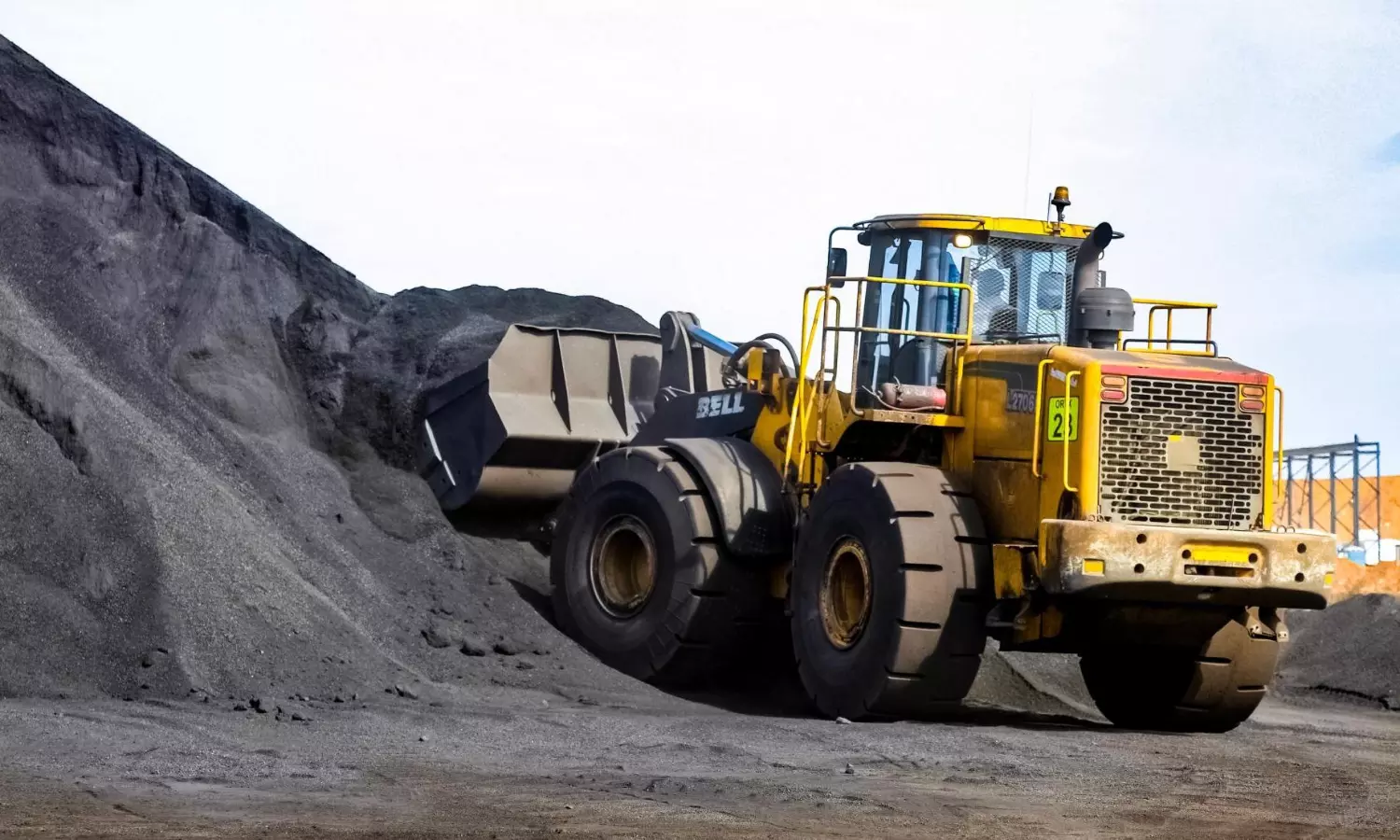Africa’s mining boom runs into a logistics bottleneck
Africa’s mining resurgence is colliding with deep infrastructure and logistics constraints that shape everything from costs to competitiveness.

Africa is entering a new era of mineral demand as global industries accelerate their shift to clean energy, boosting the strategic importance of copper, cobalt, lithium and other critical resources mined across the continent. But even as countries launch national strategies and the African Union pushes for value-chain development, the region’s logistics backbone remains under immense strain. From long, unpredictable road routes to limited rail capacity, high transport costs and congested ports, the ability to move minerals efficiently is increasingly defining the success or failure of mining operations.
Africa repositions
Mining is a major part of several African economies. For example, South Africa’s mining sales value rose to R865.8 billion ($49.95 billion) in 2024 (up 9% year-on-year). The mining sector plays a pivotal role in its national economy, contributing 6.1% to the country's nominal GDP, according to South Africa’s Department of Mineral and Petroleum Resources (DMPR).
Africa is reorienting its resource agenda toward the minerals essential for the global clean-energy shift. A continental framework produced by the African Union, the African Green Minerals Strategy, is taking shape to accelerate the growth of these strategic mineral value chains while tackling energy shortfalls. In parallel, individual nations across the region are rolling out their own policies and roadmaps to propel this new phase of mineral-led development. For instance, Zambia launched its critical minerals strategy in August 2024 and South Africa in May 2025.
African Union’s African Minerals Development Centre report reads, “Mineral supply chains are attracting greater attention. Access to raw materials is a matter of strategic importance, raising the profile of mineral-producing regions and increasing their bargaining power and opportunities for Equitable Resource Based Industrialisation (ERBI). Further, Africa has exceptional resources of renewable energy, particularly hydro, solar and wind, only a fraction of which has been harnessed, but with increasing utilisation. These developments present Africa with a new set of development opportunities arising from the continent’s mineral wealth and renewable energy potential.”
Africa is rich in minerals essential for renewable energy technologies. “However,” according to consultancy company BDO’s Annual Mining Report 2025, “the continent’s mining industry faces several challenges related to unreliable electricity grids and environmental and social concerns, such as land degradation, water and soil pollution, deforestation, human rights violations, as well as inadequate transportation infrastructure and high logistics costs. Alongside this, there can sometimes be challenging and complex tax regimes that mining companies need to navigate.”
A large share of African raw minerals is exported to China, Europe and other processing hubs. Export data and trade partners consistently show China as the largest single destination for many mineral exports. In 2023, the top partner countries to which Sub-Saharan Africa Exports Minerals include China, Mozambique, France, the Netherlands and India, according to the World Integrated Trade Solution.
Guinea's exports of bauxite, a feedstock for aluminium, jumped 36% to a record 99.8 million tonnes in the first half of 2025, driven by robust Chinese demand, even though there were declines earlier due to a regulatory crackdown.
“Most of the materials still move by road to coastal ports, and that creates persistent bottlenecks, long border delays, cross-country transit challenges, and congestion at the ports themselves.”
Zack Hartwanger, Open Mineral
Logistics: Costliest link
Logistics is the connective tissue in mining: rail, road haulage, inland terminals, conveyors, ports, stockyards and shipping. Recent national plans and private investments are expanding capacity at mines, rail links and ports to handle surging demand.
In August 2025, South Africa’s Ministry of Transport announced the eleven private operators (out of 25) that had met the criteria and were pre-selected to access 41 routes and six key rail corridors. These corridors cover the transport of both bulk and containerised freight (coal, iron ore, chromium, manganese, sugar, and fuel).
Transport consultancy firm ALG Global pointed out that the new operators will sign access agreements with Transnet, granting them slots to operate trains for periods ranging from one to ten years. Among them are Grindrod, which is involved in logistics, and mining groups such as Menar, which are seeking to secure the transportation of their production.
Zack Hartwanger, Senior Commercial Development – Africa at Open Mineral, noted that the majority of the world’s critical minerals originate in the Central African region. “Cobalt and copper produced in the DRC and Zambia make up a significant share of global supply,” he said. “But today, most of these materials still move by road to coastal ports, and that creates persistent bottlenecks, long border delays, cross-country transit challenges, and congestion at the ports themselves.” He was speaking in a Mining Review Africa webinar on the Lobito Corridor in September 2025.
Alex Pickard, EVP Corporate Development and Investor Relations at Ivanhoe Mines, added context from the perspective of a major shipper. “Ivanhoe is one of the largest exporters in the DRC. Our Kamoa-Kakula copper mine produces more than 0.5 million tonnes of copper at steady state, over a million tonnes of concentrate, and our Kipushi operation will soon be delivering around 0.3 million tonnes of zinc, or more than 0.6 million tonnes of zinc concentrate, making it by far Africa’s largest zinc mine,” he said.
According to Pickard, logistics is the single most expensive part of running a mining business across the Central African copperbelt. “At Kamoa-Kakula, it accounts for roughly a third of our operating costs. At Kipushi, where zinc is less valuable than copper, logistics represents about half of total operating costs. When you consider the volumes involved, moving tens of thousands of tonnes of bulk concentrate, and the current reliance on long-haul road routes. Today, your choices are trucking to Durban, about 3,000 kilometres away, or to Dar es Salaam, roughly 2,500 kilometres by road.”
As Sphamandla Dlamini, Group Commercial Executive of Oketsa Group, explains, Africa’s entire resource economy is shaped by its status as “a commodity-extraction-based minerals bulk continent.” The sheer volume of ore and concentrate that must move from pit to plant to port makes logistics not just a cost line but the decisive factor in mining competitiveness.” He was speaking in an interview given to On the Road podcast in August 2024.
For Dlamini, the future of African mining logistics is ultimately rail. Only a continent-wide rail backbone can handle the bulk volumes required by copper, cobalt, manganese and iron ore producers. He argues that Africa’s geography itself makes rail the continent’s most rational mode for long-haul mining freight.
But he also acknowledges that rail’s revival is not a near-term fix. “In order for us to move to the next level, we have to strengthen the rail sector. But that’s a 50-year projection.” This gap between what Africa needs and what is realistically possible explains why mines remain locked into trucks—often running thousands of kilometres across borders—to reach processors, depots and ports.
While rail remains a long-term aspiration, mining cannot wait. The industry must move product daily, regardless of whether rail exists or not. This is why road transport has become the backbone of African mining logistics.
Despite the region’s inconsistent highways, limited border capacity and fragmented regulations, road logistics has scaled up to move ore, concentrate and mining inputs across some of the world’s most challenging terrain.
Yet even this workaround comes with its own limitations. Africa’s vastness makes seamless road planning difficult. “Even with the road infrastructure, you still cannot picture the continent in the palm of your hand.” This fragmentation, paired with slow rail development, explains why mining companies face some of the highest logistics costs globally, often making up a third or more of operational expenditure in certain regions.
“At Kamoa-Kakula, logistics accounts for roughly a third of our operating costs… at Kipushi, it represents about half.”
Alex Pickard, Ivanhoe Mines
Why Lobito Corridor
Ivanhoe Mines sees the Lobito Corridor as a direct answer to the cost, reliability and sustainability challenges that define copperbelt logistics today. The Lobito Corridor is a multinational rail-and-port development linking Angola, the DRC and Zambia, launched through a partnership between the three governments and international investors to create a shorter, more efficient export route from the copperbelt to the Atlantic; it aims to cut transport distances, reduce logistics costs and emissions, and shift bulk mineral exports from long, congested road routes to a modern rail system.
By shifting exports from long-distance trucking to a shorter rail route, the corridor would cut transport distances, improve predictability, and sharply reduce the emissions tied to moving copper and zinc out of the DRC. For a company supplying metals central to global electrification, the current dependence on thousands of kilometres of diesel trucking undermines the very climate goals those minerals enable, making rail a crucial alternative.
“The opportunity that the Lobito Corridor brings is to halve that distance. But it’s not only about cutting kilometres; moving material by rail is inherently more efficient than trucking, which comes with delays and unpredictability. And from a carbon-intensity point of view, it’s hugely important. At Ivanhoe Mines, we mine the materials the modern world needs for electrification, and we try to mine them the right way, but it feels contradictory that we take those materials from the DRC, put them on a truck, and send them 2,500 kilometres. It’s actually the single biggest source of emissions in our value chain. Rail is a fantastic opportunity to reduce the emissions footprint of the mining sector in the DRC and neighbouring countries.”
Africa’s mineral wealth is vast and its role in the global energy transition is only growing, but the continent’s logistics limitations remain a defining challenge. Rail revival will take decades, and road transport, despite its scale, cannot sustainably carry the burden alone. The future of African mining, and its ability to capture more value from critical minerals, rests on whether projects like the Lobito Corridor and broader infrastructure reforms can unlock faster, cheaper and cleaner pathways from pit to port. Without this, the continent’s mineral opportunity risks being constrained by the very system meant to move it.
The article was originally published in the November-December 2025 issue of Logistics Update Africa.


